When we pose the question, we mean STORYboard. Yes, the storyboard (or, as we call them here at Simplifilm, the “Style Frames”) lays out the video piece visually, splitting it into major scenes. It sets the Look & Feel (i.e., where the Video Treatment comes to life). It gives the Client a preview of the art style and the major points in the video piece. See below for some concrete examples.
So when would you want to storyboard? Every time? Well….we’d highly recommend it.
Here’s when a storyboard is absolutely necessary in the Production process for a video:
- when it is a new Client
- when it is a longer video 15 seconds+
- when the Client is very specific about the content of the video
- when the Client is unsure of art style or Video Treatment and wants to see a visual representation of the final result
Here is when you may not need a storyboard, and can in some cases immediately jump into the motion and design of the video:
- when it is a repeat Client
- when you are re-using assets and artwork
- when it is a short piece (less than 15 seconds or so)
- when the Client has supplied artwork/assets/screen capture
- when the Client is willing to let you have free reign. In this case, the storyboarding (or not, in some cases) may be left up to the individual animator on the project, who may be seasoned enough to not need the storyboard structure. Some artists work well with storyboarding, and some do not and still produce stellar results.
For this video for NurserySource’s RediRoot product, there was no storyboard, and the strength of the final video rests solely on the strength of the script plus the skill of the animator.
You can produce something either way, but we have found that To Board is the answer when it comes to establishing trust with a Client, and communicating clearly what their final result will be. It is an extra step in the process, but one we have found well worth it, that pays dividends in the client relationship.
A few of our Style Frames (a.k.a., storyboards):
Skycanvas
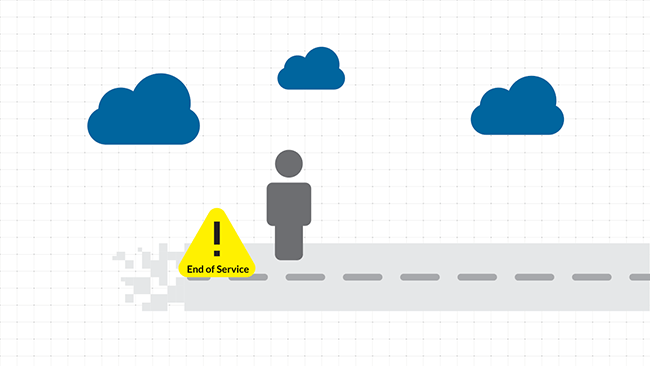
The Style Frames for Skycanvas were quite minimal…we just needed to establish the general look and feel of the piece with the client.
Forter
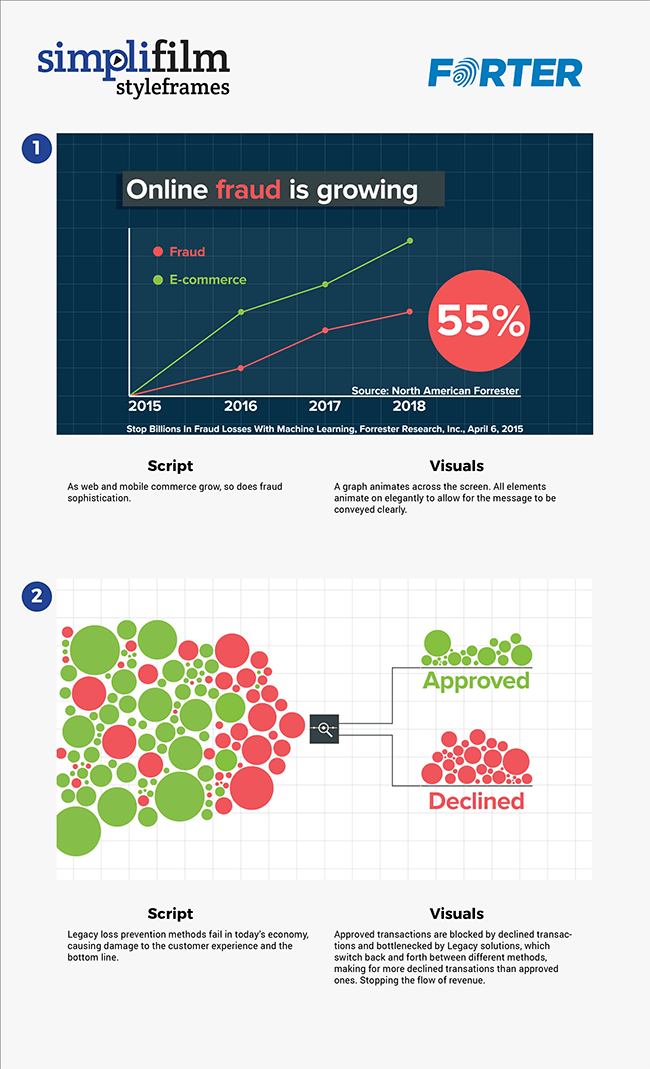
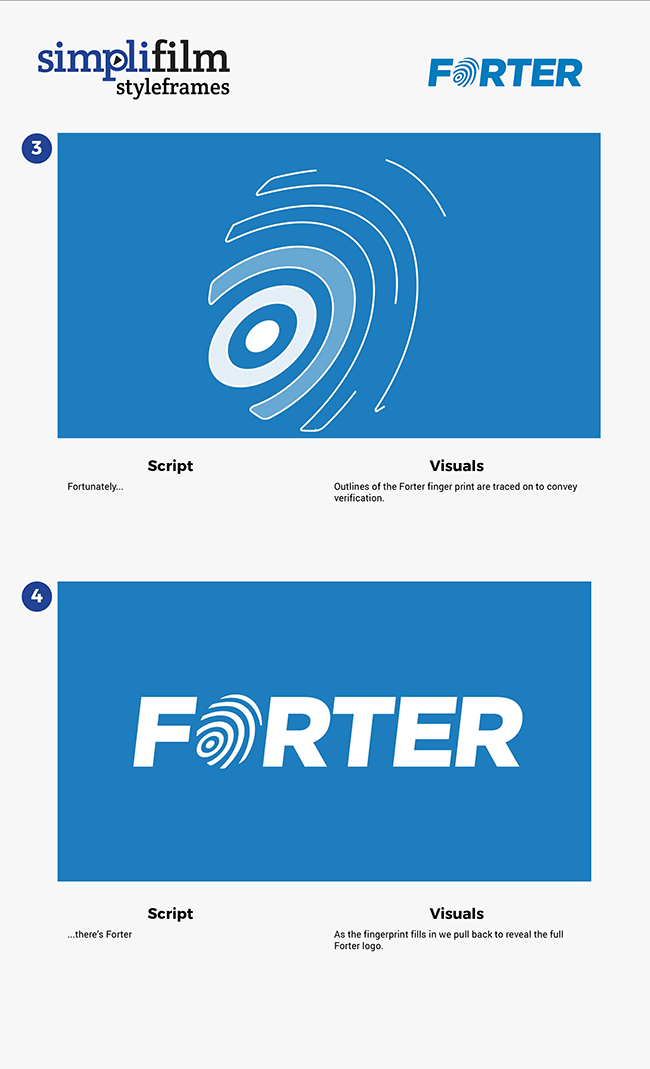
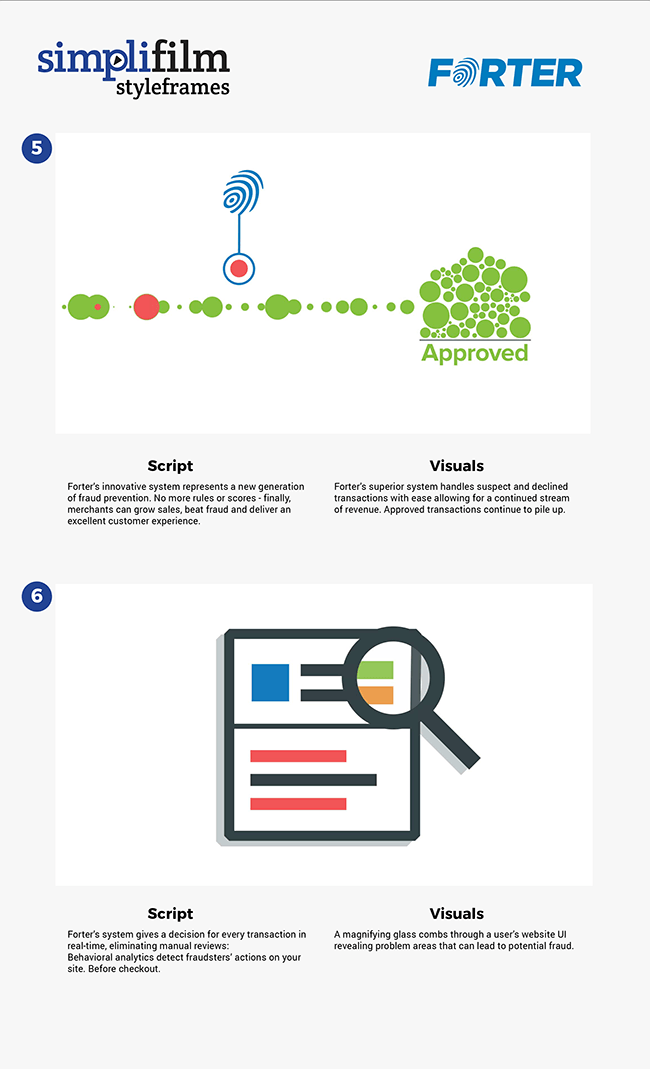
For fraud prevention software Forter, we needed to create in detail the nuances of each scene and illustrate how the client’s artwork and assets would be incorporated into the final video.
And the finished video:
Ventus Managed Wireless ATM
The style frames for the Ventus Managed Wireless ATM project were in-depth and extensive:
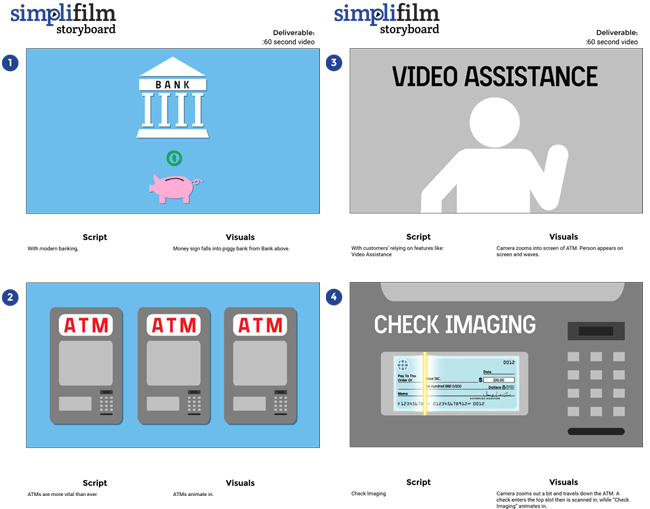
And this was our final video for Ventus:
Conclusion
So to recap…To Board or Not to Board?
YES, To Board, in order to:
- establish trust with the Client
- create clear communication
- clarify the Treatment and style
- plan the a visual roadmap of how the story unfolds
Have you ever had success with a video WITHOUT creating storyboards? Or experienced massive disaster? Share your experience below.
Can’t wait to see how your story would look in storyboards…and then in motion? Let us know what we can do for you. We can’t wait to tell your unique story.
